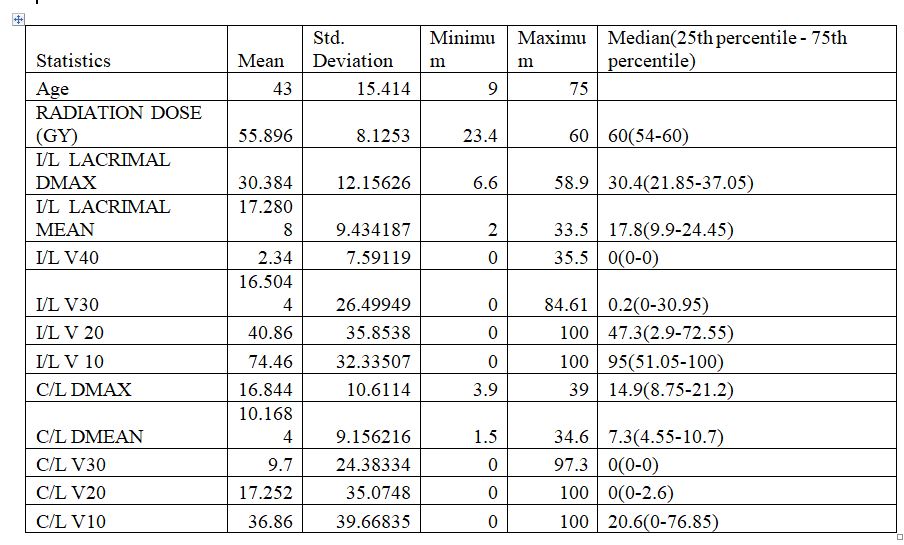The Median follow-up
duration was 13 months.
Based on location,
44% were frontal lobe tumors, 20% temporal, and 12% were of the parietal
lobe. The remaining 24% had posterior fossa and middle cranial fossa location
of the tumor. Out of 25 patients, seven patients have died. Thirteen
patients (52%) had grade 2 dry eye symptoms, five patients (20%) had grade 1 dry
eye symptoms.
The mean dose to
tumour was 55.9 Gy ,median 60 Gy (54 to 60 Gy).Ipsilateral LG Dmax was 30.4 Gy,
median 30.4 Gy(21.8-37.05 Gy), and ipsilateral LG Dmean was 17.3 Gy,median 17.8
Gy(9.9 -24.45Gy).The mean ipsilateral LG V40, V30, V20,V10 were
2.34%,16.5%,40.8%,74.5% and median were 0%,0.2%,47.3% and 95%
respectively. No grade 3 toxicity was
seen. The dose relationship for grade 2 toxicity was correlated for
Dmax, Dmean, V10, V20, V40 of ipsilateral LG. For Dmax the OR for grade 2 toxicity
was 1.01 (95% CI 0.95-1.08,p 0.695). Whereas, the OR for Dmean and grade
2 toxicity was 1.02 (95% CI 0.94-1.11,p 0.658).Similarly the OR for
grade 2 toxicity was 1.02 (95% CI 0.99-1.04,p-value 0.228),1.01 (95% CI
0.99-1.03,p 0.520) and 0.95 (95% CI 0.82-1.09,p 0.466) for
V10,V20 and V40 ipsilateral LG respectively.The contralateral LG Dmax dose was16.8 Gy,median14.9 (8.75 to 21.2) and Dmean was 10.2,median 7.3 (4.5 to 10.7).
